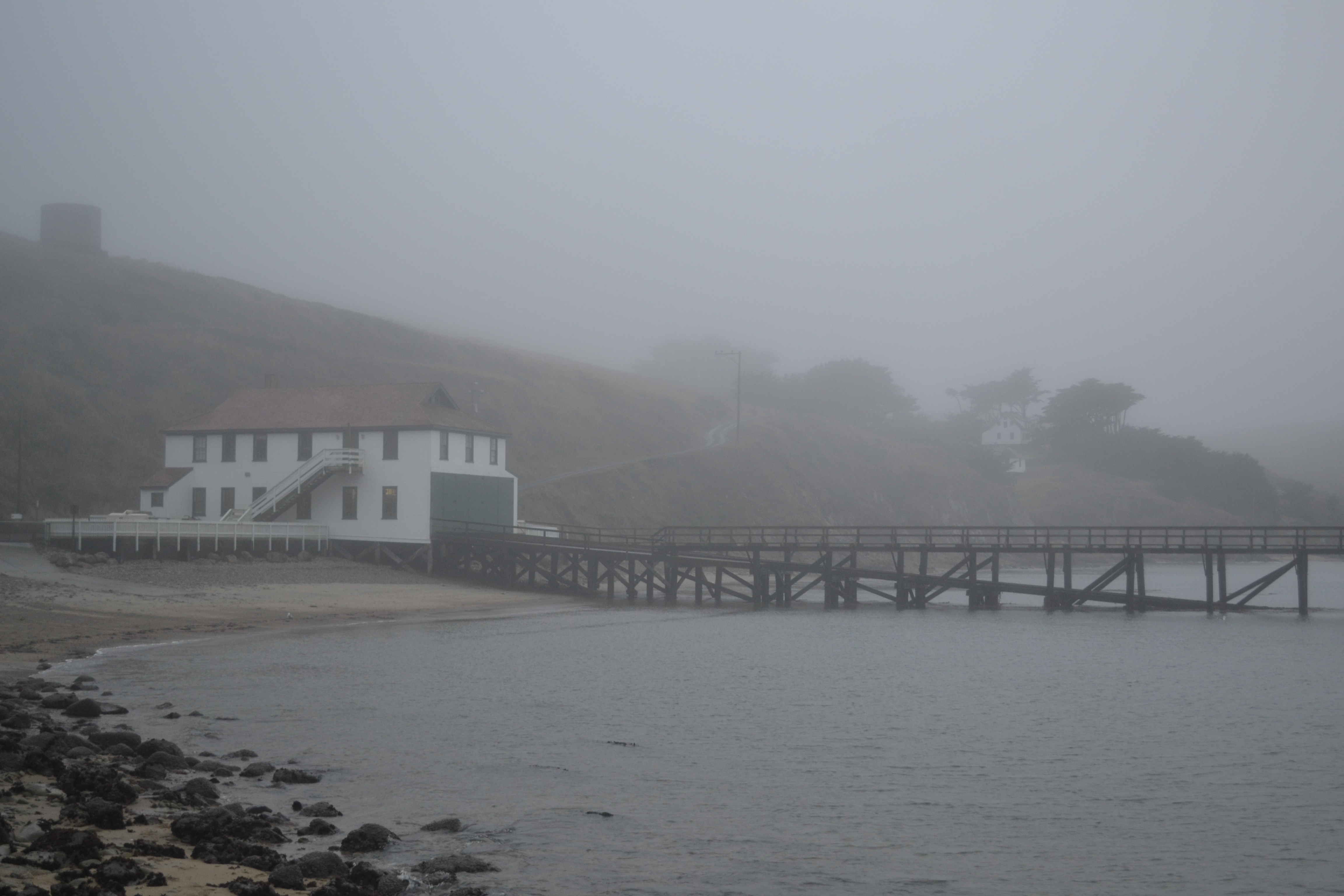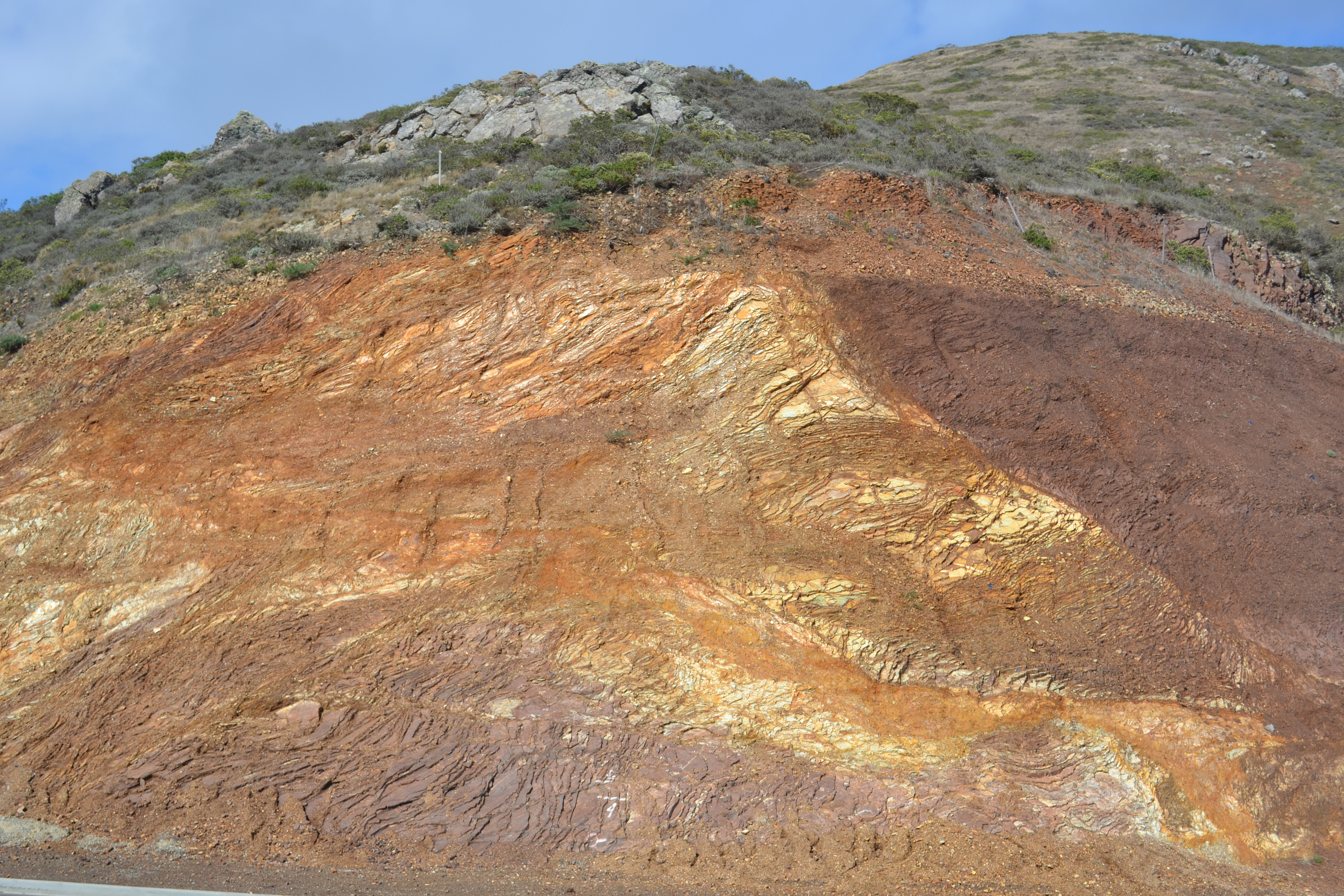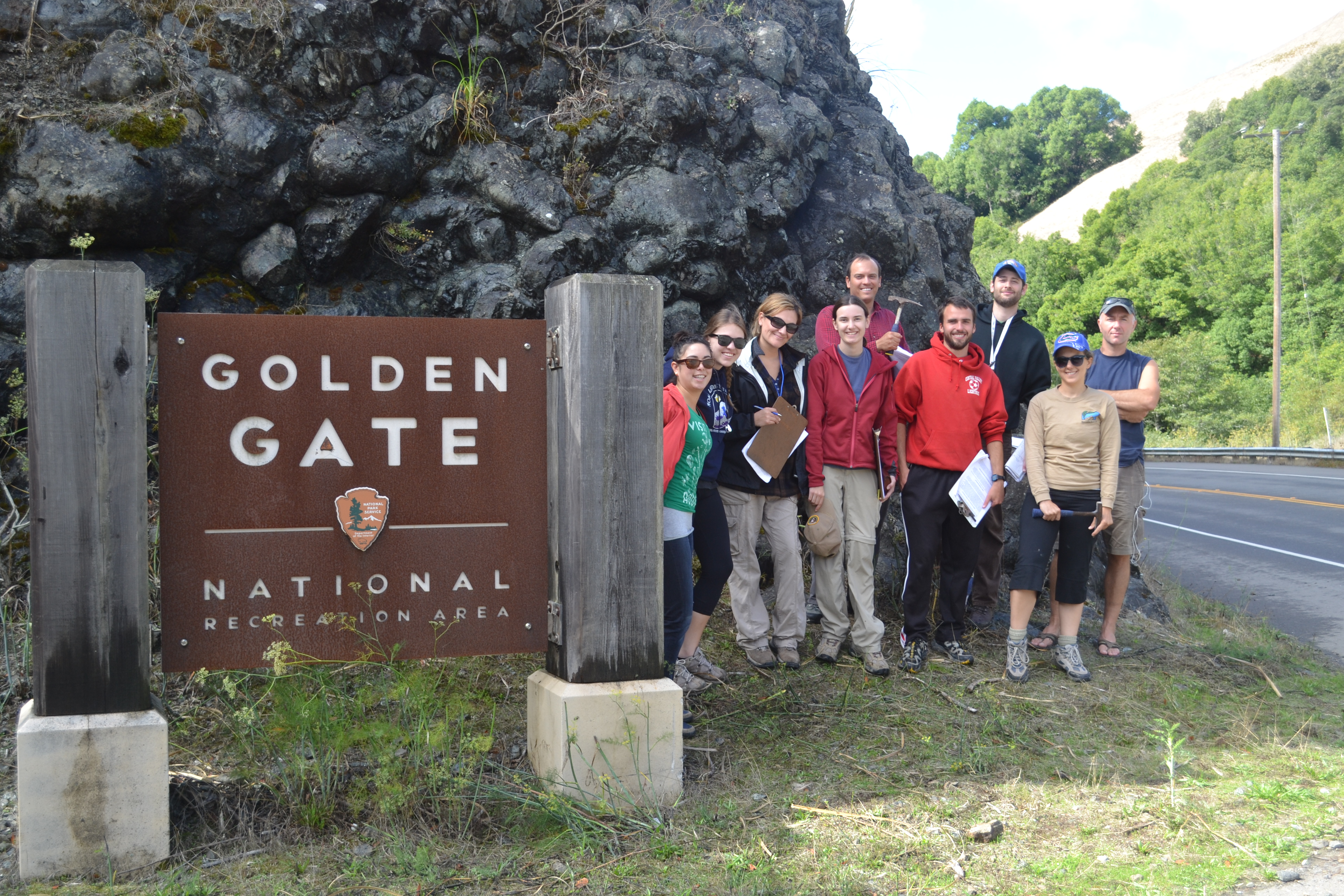By Catherine Drake, Invertebrate Zoology Lab
Other than a few awesome, albeit too short, trips to the Monterey Bay Aquarium, I hadn’t spent much time in the Central Coast. So when I moved up here for graduate school at MLML, I didn’t know much about the area; that is, until my MS 141 class. Geological Oceanography—taught by Dr. Ivano Aiello—involves learning about the formation of minerals and rocks, as well as geological mechanisms such as plate tectonics. We’ve taken field trips almost every week to various locations along the Central Coast and inland as well. One of my favorite field trips was our overnight trip to Point Reyes, where we stayed in an old lifeboat station while we observed different types of rock formations.

We examined multiple sedimentary rocks both along our journey to the station and also once we had arrived. One of the depositions we inspected was an outcrop of radiolarian cherts. These deposits sit underneath about half of the Marin Headlands, are resistant to weathering, and can be up to 200 million years old. They are comprised of radiolarians, which are protozoans that form siliceous (made of silica) skeletons. As these organisms decompose, a radiolarian ooze is formed in the deep ocean; over time, deposition occurs along the seafloor, forming the well-bedded radiolarian cherts.

Igneous rocks were also on our list of stops, as we went to a formation of pillow basalts. They are formed underwater as lava comes in contact with seawater and cools rapidly. Basalts are generally aphanitic rocks, meaning that they cool down too quickly for any minerals to form as the magma cools. As they are created, pillow basalts form ellipsoidal shapes and depict the direction of the lava flow.

It was so surreal to touch igneous and sedimentary structures that formed hundreds of millions of years ago. Examining these rocks helped me better understand the geological mechanisms involved in their formation. Not only did these sedimentary depositions and igneous rocks help me become more acquainted with the Central Coast, but they also demonstrated the fact that oceans are integral components to the geologic history of our planet.

